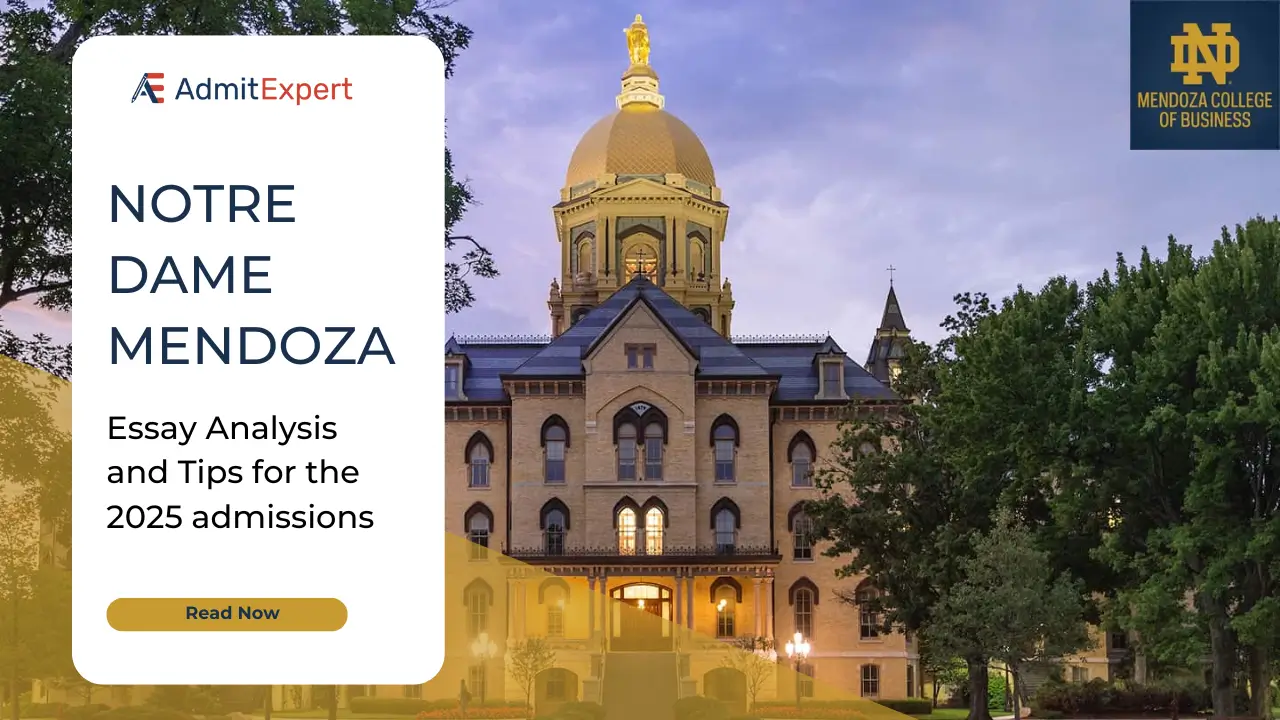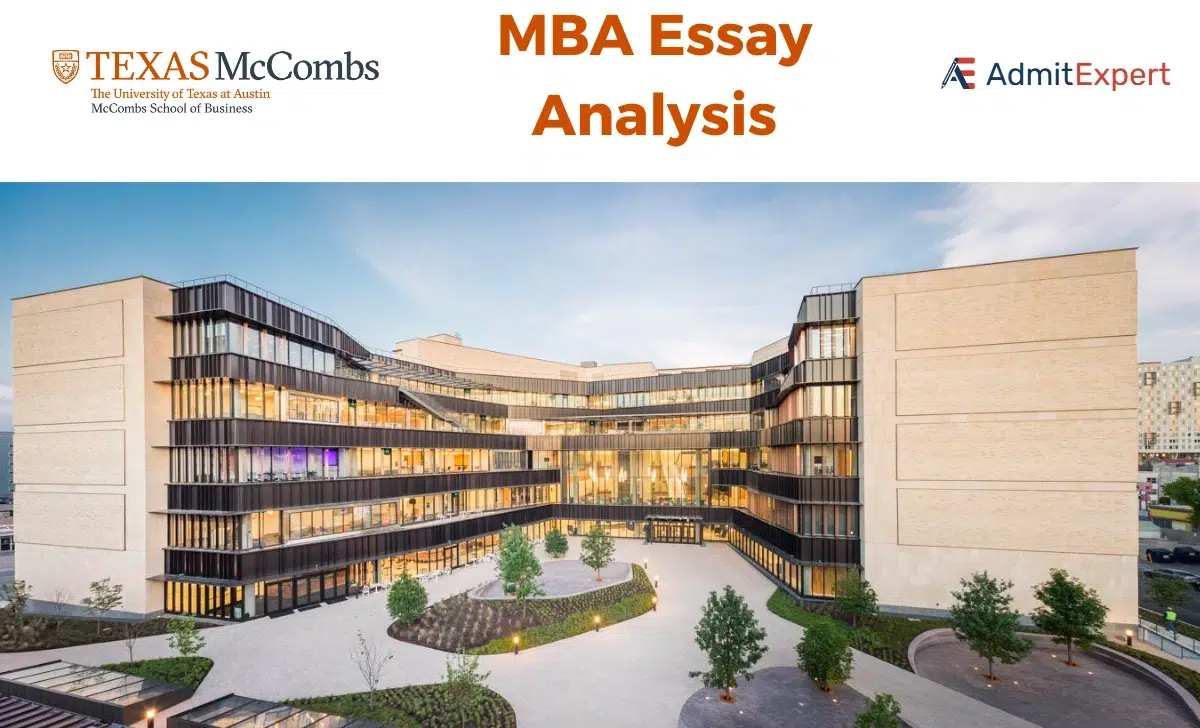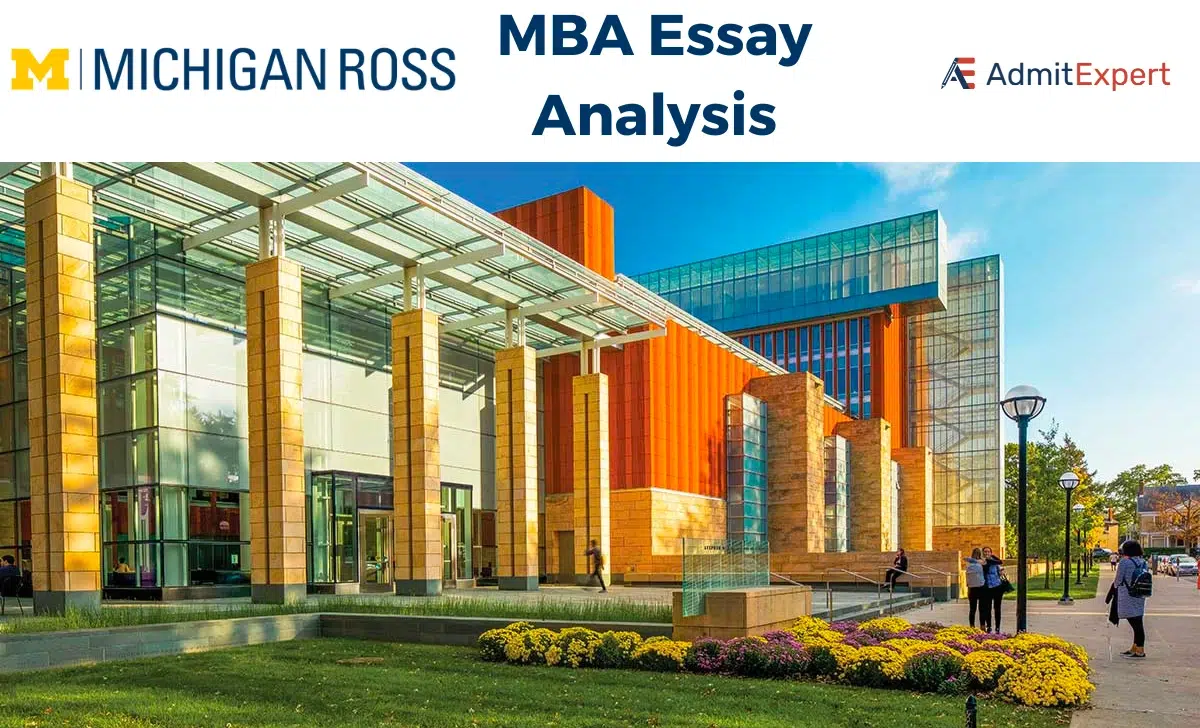Stanford Business School is one of the most widely known business schools in California and across the globe. It has a long history of giving its students a world-class business education and empowering them with a unique set of skills that further enable them to flourish in the corporate world.

Are you considering pursuing an MBA at Stanford Graduate School of Business (GSB) and want to know what to expect? Well, you’re in the right place.
In this article, we’ll provide you with valuable insights into the Stanford GSB MBA program. We’ll start by delving into the class profile of the incoming Class of 2026, offering you a snapshot of the diverse and accomplished individuals who were talented enough to get into Stanford GSB. Next, we’ll explore the employment reports from the Class of 2024, shedding light on the promising career opportunities that await Stanford GSB graduates.
Additionally, we’ll break down the cost of attendance, ensuring you have a clear understanding of the financial aspects of pursuing your MBA at Stanford. And for those seeking financial aid, we’ll also discuss scholarships available to help make your dream of attending Stanford GSB a reality.
General information on Stanford GSB
Location: 655 Knight Way Stanford, CA 94305 USA
Dean: Peter M. DeMarzo
Admissions Office:
MBA Admissions Office, McClelland Bldg, 655 Knight Way, Stanford, CA 94305-7298, USA
Phone: +1 (650) 723-2766
Fax: +1 (650) 725-7831
Email: mba_admissions@gsb.stanford.edu
Social media: Facebook, Twitter, YouTube, Instagram, LinkedIn
Stanford MBA – By the numbers
Let us dive into a few important statistics about Stanford’s recent MBA class of 2026
| Applications Received | 7295 |
| Class Size | 424 |
| Average GMAT Score | 730 |
| GMAT Range | 560-790 |
| Median GRE Score | 327 |
| GRE Range | 305-340 |
| Average TOEFL Score | 113 |
| TOEFL Range | 104-120 |
| Average GPA | 3.75 |
| Work Experience (Average) | 5.1 years |
| Tuition Cost for a Single Person (first year) | $79,860 |
| Percentage of students that received a job offer | 88% |
| Median Base Salary | $185,000 |
| Median Signing Bonus | $30,000 |
| Median Performance Bonus | $50,000 |
Now, let’s study in depth the 2026 class of Stanford Business School:
Stanford GSB MBA Class of 2026 Profile
Stanford Graduate School of Business (GSB) continues its tradition of attracting top-tier talent, assembling an MBA Class of 2026 that is academically exceptional, professionally diverse, and globally representative. This class embodies the school’s mission to foster innovation, leadership, and positive global impact. Below is a comprehensive look at the class demographics, academic backgrounds, and career trajectories.
Class Overview
| Metric | Details |
|---|---|
| Total Applicants | 7,295 |
| New Students Enrolled | 424 |
| Women | 44% |
| International Students | 39% |
Global Representation
The Class of 2026 represents the most international cohort in Stanford GSB’s history, with students from 72 countries, reinforcing the school’s commitment to fostering a global learning environment.
Academic Background
| Metric | Details |
| Average GPA | 3.75 (U.S. 4.0 scale) |
| First-Generation Students | 12% |
| Students Holding Advanced Degrees | 16% |
Undergraduate Majors
| Field of Study | Percentage |
| Engineering | 31% |
| Economics | 20% |
| Social Sciences | 16% |
| Business/Commerce | 18% |
| Math/Sciences | 10% |
| Arts/Humanities | 5% |
Educational Institutions Represented
| Metric | Details |
| U.S. Institutions | 78 |
| Non-U.S. Institutions | 97 |
Professional Experience
| Metric | Details |
| Average Work Experience | 5.1 years |
Pre-MBA Industries
| Industry | Percentage |
| Consulting | 20% |
| Investment Management/Private Equity/Venture Capital | 19% |
| Technology | 14% |
| Government/Education/Nonprofit | 9% |
| Consumer Products & Services | 7% |
| Healthcare | 6% |
| Financial Services | 6% |
| Military | 5% |
| Manufacturing | 4% |
| Arts/Media/Entertainment | 3% |
| Cleantech/Energy/Environmental | 2% |
| Other | 3% |
Standardized Test Scores
Stanford GSB maintains a holistic admissions process, considering both GMAT and GRE scores without preference or minimum requirements.
GMAT Scores
| Category | Score Range | Average Score |
| Total | 560–790 | 730 |
GRE Scores
| Category | Score Range | Average Score |
| Verbal | 152–170 | 163 |
| Quantitative | 153–170 | 164 |
TOEFL Scores (For Non-Native English Speakers)
| Category | Score Range | Average Score |
| Total | 104–120 | 113 |
Key Insights from the Class Profile
- Diverse and Global Cohort: With 39% international students and representation from 72 countries, Stanford GSB fosters a multicultural and globally engaged learning environment.
- Strong Academic Foundation: An average GPA of 3.75, along with 16% of students holding advanced degrees, highlights the intellectual rigor of the class.
- Varied Professional Backgrounds: Consulting (20%) and Investment Management/Private Equity/Venture Capital (19%) continue to be the leading pre-MBA industries, while technology (14%) and nonprofit/government sectors (9%) also see strong representation.
- Balanced Gender Representation: Women make up 44% of the class, reinforcing Stanford’s commitment to gender diversity and inclusive leadership.
- Flexible Admissions Approach: Stanford GSB evaluates candidates holistically, considering both GMAT and GRE scores without strict cutoffs.
MBA Application Deadlines
The application dates for the MBA Class of 2027 (incoming class of 2025) are
| Round | Submit By | Decision Notification |
| Round 1 | September 10, 2024 | December 5, 2024 |
| Round 2 | January 8, 2025 | April 3, 2025 |
| Round 3 | April 8, 2025 | May 29, 2025 |
Now that you are familiar with the educational and industry background of Stanford GSB MBA Class of 2026, you may have a better idea as to how you compare against them. For an admit into Stanford’s MBA program, it is important to try and match or exceed these numbers.
Let us now dive into the post-graduation compensation of Stanford MBA students.
Stanford MBA Employment Statistics – Class of 2024
The Stanford Graduate School of Business (GSB) MBA Class of 2024 demonstrates outstanding career outcomes, with graduates pursuing diverse professional paths and securing impressive compensation packages. The following insights provide a detailed overview of employment trends, industry placements, compensation statistics, and geographic distribution.
Employment Summary
| Category | Number | Percentage |
|---|---|---|
| Total Graduates | 432 | 100% |
| Sought Employment | 249 | 58% |
| Not Seeking Employment | 181 | 42% |
| – Company-Sponsored | 51 | 12% |
| – Continuing Education | 16 | 4% |
| – Starting a New Business | 98 | 23% |
| – Not Seeking for Other Reasons | 13 | 3% |
| – Postponing Job Search | 3 | 1% |
Key Insights:
- 42% of graduates opted out of traditional employment, with 23% launching their own businesses.
- Company sponsorship remains a significant factor, accounting for 12% of graduates.
- Only 1% postponed their job search, indicating strong career preparedness.
Job Offers and Acceptances
| Metric | By Graduation | By 3 Months Post-Graduation |
| Job Offers (Seeking Employment) | 69% | 88% |
| Job Acceptances (Seeking Employment) | 58% | 80% |
Key Insights:
- 88% of students received job offers within three months of graduation.
- 80% accepted offers in the same period, highlighting strong employer demand for GSB talent.
Compensation Overview
| Category | Median | Mean | 25th Percentile | 75th Percentile |
| Base Salary | $185,000 | $187,504 | $161,250 | $205,000 |
| Expected Performance Bonus | $50,000 | $100,535 | N/A | N/A |
| Signing Bonus | $30,000 | $33,967 | N/A | N/A |
Key Insights:
- A median base salary of $185,000 reflects the high market value of GSB graduates.
- Performance bonuses average $100,535, signaling strong earnings potential.
- 49% of graduates reported signing bonuses, with a median of $30,000.
Employment by Industry
| Industry | Percentage | Median Base Salary | Median Bonus |
| Consulting | 14% | $190,000 | $40,000 |
| Finance | 37% | $200,000 | $150,000 |
| Technology | 22% | $185,000 | $29,625 |
| Venture Capital | 7% | $200,000 | $50,000 |
| Private Equity | 20% | $200,000 | $175,000 |
| Healthcare | 6% | $160,000 | $29,000 |
Key Insights:
- Finance leads with 37% of graduates, offering the highest median base salary ($200,000).
- Technology (22%) and consulting (14%) remain popular career choices.
- Private equity and venture capital provide lucrative compensation, with median salaries of $200,000.
Employment by Function
| Function | Percentage | Median Base Salary | Median Bonus |
| Consulting | 16% | $190,000 | $40,000 |
| Finance | 32% | $200,000 | $175,000 |
| General Management | 32% | $175,000 | $32,000 |
| Marketing / Sales | 17% | $172,500 | $30,000 |
| Product Management | 8% | $185,000 | N/A |
Key Insights:
- Finance and general management roles (64%) dominate post-MBA employment.
- Product management offers a competitive median salary of $185,000.
- Marketing and sales roles provide strong median compensation of $172,500.
Employment by Location
| Region | Percentage | Median Base Salary |
| North America | 91% | $190,000 |
| – West (U.S.) | 45% | N/A |
| – Northeast (U.S.) | 31% | N/A |
| Asia, Australia & Oceania | 2% | $146,500 |
| Latin America, Caribbean & South America | 5% | N/A |
Key Insights:
- 91% of graduates accepted jobs in North America, with the West (45%) and Northeast (31%) leading.
- International placements (9%) highlight Stanford GSB’s global reach.
Entrepreneurship and Startups
| Industry | Percentage |
| Technology | 28% |
| Healthcare | 16% |
| Consumer Products | 12% |
| Finance | 4% |
Key Insights:
- 23% of graduates founded their own businesses, a testament to GSB’s entrepreneurial focus.
- Technology (28%) and healthcare (16%) are the top industries for startups.
Stanford MBA Cost of Attendance and Financial Aid
Investing in a Stanford MBA
Earning an MBA from Stanford Graduate School of Business (GSB) is a transformative experience and a significant financial investment. The total cost of attendance includes tuition, living expenses, health insurance, and other fees. However, Stanford GSB is committed to making its program accessible through need-based fellowships and financial aid options.Cost of Attendance for 2024–2025
The cost of attendance is calculated based on a standard budget and varies based on marital status. Below is a breakdown of expenses for first-year MBA students:
| Expense | Single Student | Married Student |
|---|---|---|
| Tuition | $82,455 | $82,455 |
| Living Expenses | $19,008 | $35,226 |
| Housing | $20,880 | $31,122 |
| Medical Insurance | $7,620 | $7,620 |
| Health Fee | $783 | $783 |
| Total | $130,746 | $157,206 |
What’s Included?
- The living allowance covers rent, food, and personal expenses for a moderate lifestyle.
- Stanford GSB medical insurance (Cardinal Care) is included in the budget, even for students who have alternative coverage.
- Additional allowances may be granted for students with dependent children.
What’s Not Included?
- Global Experience Requirement (GER): Some GER experiences may cost between $4,000 and $6,000 and are not automatically included in the budget. Need-based fellowship recipients may receive additional grants covering up to 40% of one qualifying trip.
- Club Fees & Personal Expenses: Costs related to extracurricular activities, club memberships, or lifestyle choices are not included in financial aid calculations.
Adjustments to the Cost of Attendance
While a standard budget is used to determine financial aid eligibility, adjustments can be made for special circumstances. However, these adjustments typically increase loan eligibility rather than fellowship awards.
Allowable Budget Adjustments
- Medical Expenses & Child Care: Uninsured medical costs and child care expenses for full-time students may be considered with proper documentation.
- Global Experience Requirement: Expenses related to specific GER programs (such as Global Study Trips and the Stanford Tsinghua Exchange Program) may be added to the budget.
- Laptops: Students who need to purchase a laptop for academic purposes can request this cost to be included in their budget.
- Travel to and from Home: Stanford GSB allows two round-trip flights to be factored into the cost of attendance each academic year.
Non-Allowable Budget Adjustments
- Consumer Debt: Credit card balances, car loans, and personal debts cannot be included in financial aid calculations.
- Non-Deferrable Education Loans: Loans that cannot be deferred while enrolled at Stanford GSB are not considered in budget adjustments.
- Non-Qualifying GER Programs: Some GER experiences, such as GMIX (Global Management Immersion Experience), are not eligible for budget adjustments.
Tuition and Financial Aid
A Stanford MBA degree is a valuable long-term investment. To ensure that all admitted students can afford to attend, Stanford GSB provides a mix of student loans and generous need-based fellowships.
| Financial Aid Metric | Amount |
| Average Stanford GSB Fellowship (Class of 2024) | $47,000 per year |
| Total Awarded Fellowships | $94,000 (two years) |
- Fellowships are gifts that do not need to be repaid and are based solely on demonstrated financial need.
- Loans are available to cover remaining expenses after fellowships and personal contributions.
Need-Based Aid at Stanford GSB
- Admissions decisions are need-blind—Stanford does not consider financial resources when evaluating applicants.
- Financial aid is awarded after admission, based on a student’s demonstrated need.
- All students, regardless of citizenship, are eligible for fellowships if they demonstrate financial need.
Determining Your Financial Contribution
After admission, Stanford calculates an expected student contribution based on individual financial situations. This includes:
- A portion of personal income and assets.
- A reduced expected contribution for married students due to federal guidelines.
- Encouragement to pay off consumer debt before applying for aid.
Financial aid covers the gap between the cost of attendance and the expected student contribution using a mix of fellowships and loans.
Final Thoughts
Getting an MBA from Stanford GSB is a dream for most MBA applicants. Stanford GSB is one of the leading business schools in the world, so getting into it can be hard. Even though there is no foolproof method to ensure admission to Stanford GSB, you can improve your chances significantly by working diligently on your application. We can help you get into Stanford GSB. Our consultants include Stanford GSB alumni who will give you the most accurate advice and guidance you’ll need to get into GSB. So, get started now.




